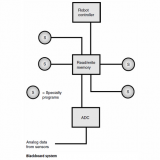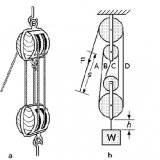ROBOT GENERATIONS – 21118
Engineers and scientists have analyzed the evolution of robots, marking progress according to robot generations.
First generation
A first-generation robot is a simple mechanical arm. These machines have the ability to make precise motions at high speed, many times, for a long time. Such robots find widespread industrial use today. First-generation robots can work in groups, such as in an automated integrated manufacturing system (AIMS), if their actions are synchronized. The operation of these machines must be constantly supervised, because if they get out of alignment and are allowed to keep working, the result can be a series of bad production units.
Second generation
A second-generation robot has rudimentary machine intelligence. Such a robot is equipped with sensors that tell it things about the outside world. These devices include pressure sensors, proximity sensors, tactile sensors, radar, sonar, ladar, and vision systems. A controller processes the data from these sensors and adjusts the operation of the robot accordingly. These devices came into common use around 1980. Second-generation robots can stay synchronized with each other, without having to be overseen constantly by a human operator. Of course, periodic checking is needed with any machine, because things can always go wrong; the more complex the system, the more ways it can malfunction.
Third generation
The concept of a third-generation robot encompasses two major avenues of evolving smart robot technology: the autonomous robot and the insect robot. An autonomous robot can work on its own. It contains a controller, and it can do things largely without supervision, either by an outside computer or by a human being. A good example of this type of thirdgeneration robot is the personal robot about which some people dream. There are some situations in which autonomous robots do not perform efficiently. In these cases, a fleet of simple insect robots, all under the control of one central computer, can be used. These machines work like ants in an anthill, or like bees in a hive.While the individual machines lack artificial intelligence (AI), the group as a whole is intelligent.
Fourth generation and beyond
Any robot of a sort yet to be seriously put into operation is a fourthgeneration robot. Examples of these might be robots that reproduce and evolve, or that incorporate biological as well as mechanical components. Past that, we might say that a fifth-generation robot is something no one has yet designed or conceived.
The table summarizes robot generations, their times of development, and their capabilities.



